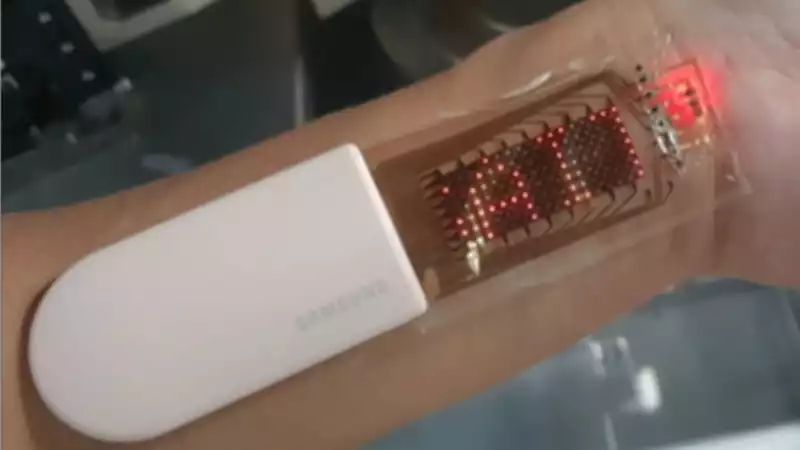Update: Samsung's stretchable display technology may be a ways off, but sliding screens for cell phones and tablets may be here sooner
While we are all teetering until 2021, Samsung is living in 2050 with its new extendable display technology Unlike folding or rolling screens, this free-form display can "stretch and change shape in any direction like a rubber band," making it suitable for sci-fi applications
Samsung blogged news of the work its researchers have been doing, saying that now that "the establishment of flexible displays [is] behind us," the next frontier is a stretchable display that allows "both high-resolution visuals and portability" simultaneously
Researchers at the Samsung Advanced Institute of Technology (SAIT) have successfully created a device that combines a stretchable organic LED (OLED) display with a photoelectric (PPG) sensor that measures and displays the wearer's heart rate in real time The form factor of this "stretchable electronic skin," as Samsung named it, can be seen in the image above
Interestingly, the researchers found the display to be quite robust While worn, the device was noted to be unaffected by wrist movement and could be stretched up to 30% without affecting performance In addition, the device withstood 1,000 stretches The material is also very effective when it comes to sensing biometrics Samsung said that when the sensor was attached to a moving wrist, "it was found to pick up a heartbeat signal that was 24 times stronger than that picked up by a fixed silicon sensor
The technology is still in its early stages, and initial applications seem to be geared toward the medical field, but as adaptations progress, we could see future fitness trackers evolve to a similar form factor
"The strength of this technology is that the patch feels like part of the skin, allowing biometric data to be measured over time without having to remove the solution during sleep or exercise," says lead researcher Youngjun Yun
[14] "You can also see your biometric data right on the screen without having to transfer it to an external device This technology could also be applied to wearable healthcare products for adults, children, infants, and patients with certain diseases"









Comments